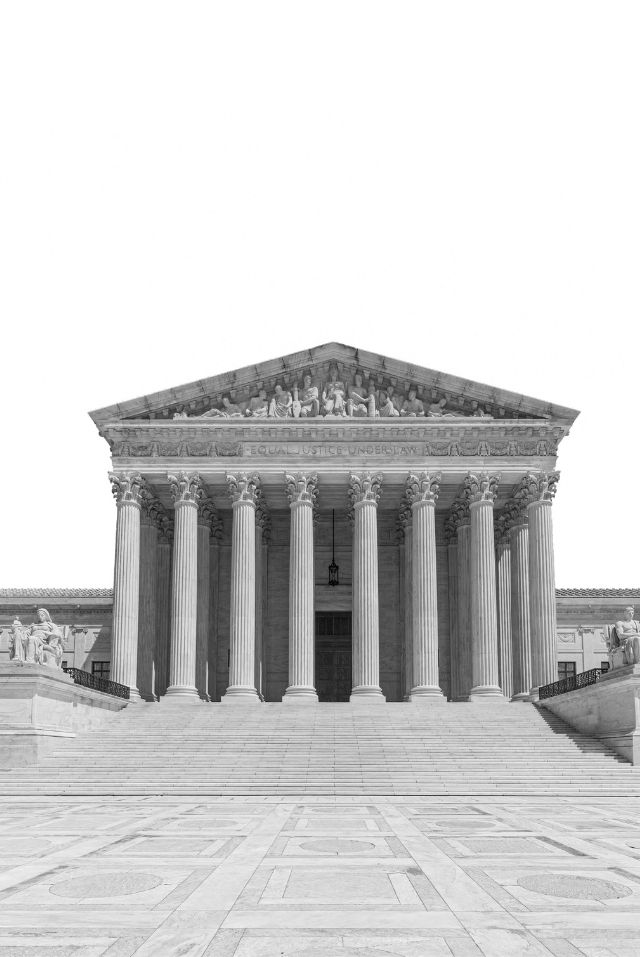
About the Play: Justice
There are The Supremes (Florence Ballard, Diana Ross, Mary Wilson). And then there are THE Supremes – Thurgood Marshall, Warren Burger, Earl Warren, et al. Both are recognized for their lasting impact on the world they inhabit. Both have been given to periodic internal dissent. Both sometimes slide a tad too close to the political. Both have been known to sing. At least from the creative minds of Lauren Gunderson, Kait Kerrigan and Bree Lowdermilk, that’s true. Here we have Sandra Day O’Connor, the first woman appointed to the Supreme Court, alongside the next woman appointed to the Court, Ruth Bader Ginsberg, inspiring each other, through song and memories, and reminding us what it took to hold true to their respective beliefs and values. Watching it all unfold is the current, fictional, appointee – Vera – the heir to the legacy we see established by O’Connor and Ginsberg.
This is not meant to be glib, this connection between The Supremes and the Supreme Court; rather, it is meant to suggest that there is something significant when women are included in the mix – whether we are talking about the music that shapes a generation or the legal decisions that impact every citizen of the United States.
Gunderson, Kerrigan and Lowdermilk have, in their world premiere musical Justice captured the current moment in which we are living: there is an open seat on the Supreme Court and the questions swirling around the potential nominee started even before Justice Stephen Breyer announced his retirement. In Justice, they give us a glimpse into the unique relationship forged between O’Connor – a daughter of Arizona, Christian, conservative – and Ginsberg – Brooklyn to her core, Jewish and liberal – and the delicate dance of finding common ground. It is, in today’s parlance, ripped from the headlines.
The play is bookended by the sentiment of “getting to work,” a notion that is infused throughout the entire piece. It’s about the work, both of the cases that came before them, as well as the work that it took for each to arrive on the bench in the first place. The women sing:
SANDRA
I HAVE WORKED TWICE AS HARD
AND TWICE AS LONG
RUTH
TO PROVE THAT I’M WORTHY,
I HAVE ACTED TWICE AS STRONG.
ALL THREE
THAT’S HOW I KNOW
THE BITTER PAIN
OF WORKING TWICE AS HARD WITH NO GLORY.
OF BEING WRITTEN OUT OF THE STORY.
In the recounting of the decisions presented to them, including Bush v Gore, which created a wedge between the sisterhood, we see the nuances of how legal interpretation is infused by personal, lived experience. They recognize the inherent tension of this, as Sandra tells Ruth:
I’ve worked at every level of government and every other one gives you a way to dodge the vastness of this country’s politics and opinion. Not here. We have to hold ordinary people in mind, every one of them, because everything that matters to them eventually comes to this court. But it does not always come quick.
Whether the case is United States v Virginia (1996) or the cases that followed Bush v Gore, where the two got to work in the defense of women’s rights, civil rights, and gay rights, Justice allows an audience to see not only the inner workings of the court, but also the painful realities of politics in justice. The character of Vera, perhaps even more important than the two sitting judges she shares the stage with, is subject to an interrogation that questions her motives, her history and her personal relationships – not good for justice, no matter which side of the aisle one sits on. Vera is important, essential even, to this story, because we are living it right now. How do we want the highest court in the land, the one that shapes how we live in the world, to reflect that very same world? Why is representation so important? Look to the path set by O’Connor, nurtured by Ginsberg, maintained by Sotomayor and Kagan and hopefully, perhaps, expanded by Vera for answers. And then sing. Get to work.